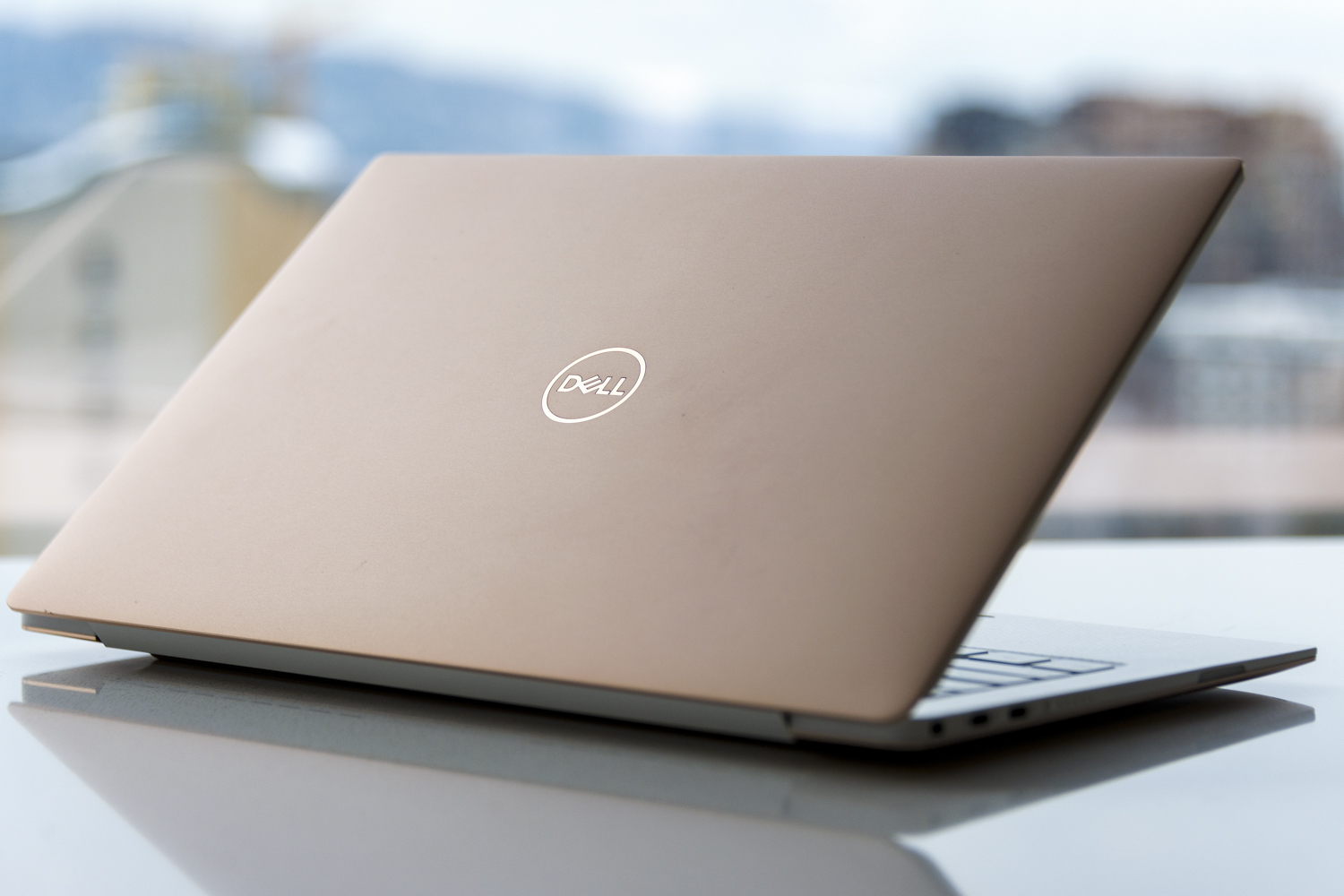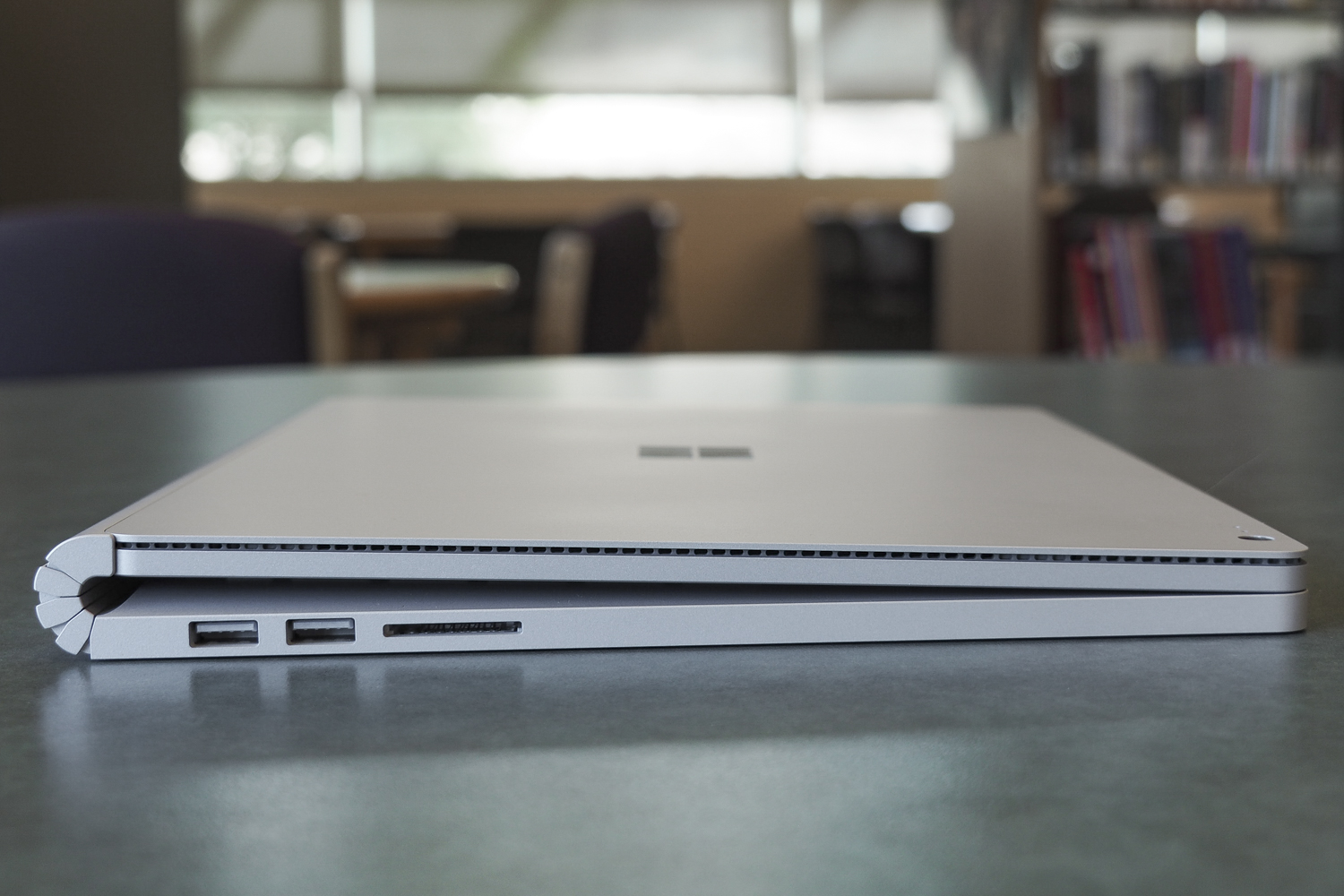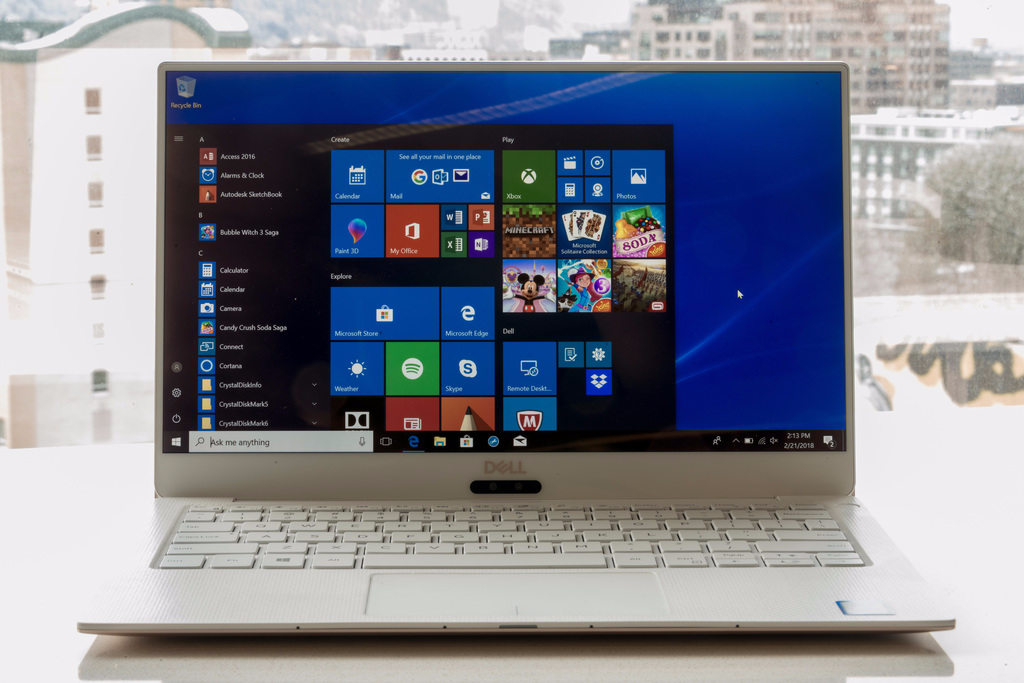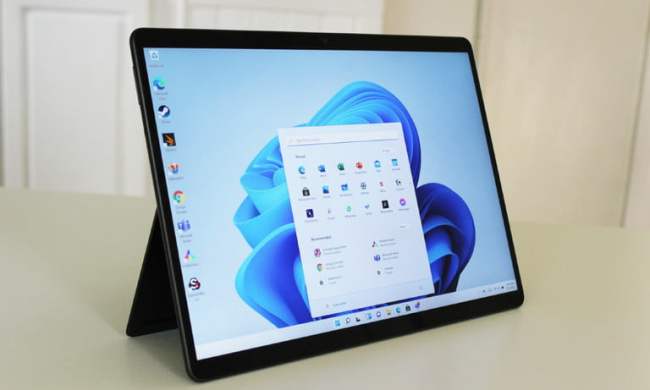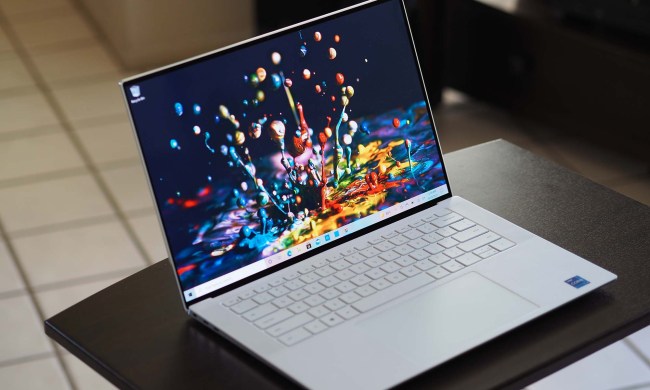Dell’s XPS 13 has long been one of our favorite 13-inch notebooks, offering a solid build quality, great performance, and long battery life. Now, Dell has finally upgraded the somewhat stagnant design, making our favorite notebook in this popular class even better.
There’s stiff competition, though, including the growing 2-in-1 form factor that brings many of the same advantages of clamshell notebooks with the flexibility of tablets. The most unusual example of that class of notebooks is Microsoft’s Surface Book 2, which added a performance boost to its unique tear-off display design.
Before you pull out your wallet and spend your hard-earned dollars on a new notebook, we thought you might benefit from a Dell XPS 13 vs. Microsoft Surface Book 13 shootout to see which form factor is right for you.
|
Dell XPS 13 |
Surface Book 2 13 |
|
| Dimensions | 11.9 x 7.8 x 0.3-0.46 (in) | i5 version: 12.3 x 9.14 x 0.51-0.90 (in) i7 version: 12.3 x 9.14 x 0.59-0.90 (in) |
| Weight | 2.67 pounds | 13.5-inch starts at 3.38 pounds |
| Keyboard | Full-size backlit keyboard | Full-size backlit keyboard |
| Processor | Up to eighth-generation Intel Core i7 | Up to eighth-generation Intel Core i7 |
| RAM | 8GB or 16GB RAM | 8GB or 16GB |
| Graphics | Intel UHD 620 | Intel UHD 620 Nvidia GeForce GTX 1050 |
| Display | 13.3-inch InfinityEdge | 13.5-inch PixelSense 15.0-inch PixelSense |
| Resolution | Full HD (1,920 x 1,080 or 165 PPI) 4K UHD (3,840 x 2,160 or 331 ppi) |
3,000 x 2,000 (267 ppi) |
| Storage | Up to 1TB PCIe SSD | Up to 1TB PCIe SSE |
| Networking | 802.11ac, Bluetooth 4.1 | 802.11ac, Bluetooth 4.1 |
| Connectivity | USB-C 3.1, USB-C with Thunderbolt 3 (x2), mini-DisplayPort, microSD card reader, 3.5mm combo jack | USB-A 3.0 (x2), USB-C 3.1, Surface Connect, SD card reader, 3.5mm combo jack 15-inch only: Xbox Wireless built-in |
| Windows Hello |
Fingerprint scanner Infrared camera |
Infrared camera |
| Operating System | Windows 10 | Windows 10 |
| Battery | 52 watt-hours | 70 watt-hours |
| Price | $1000+ | 13.5-inch i5: $1,200 13.5-inch i7: $2,000+ |
| Availability | Now (Dell Store) | Now (Microsoft Store) |
| Review | Full review: 4.5 out of 5 stars | Full review; 4 out of 5 stars |
Design
Dell’s newest XPS 13 has a thin and robust design that utilizes with aluminum for a rigid chassis and strong carbon fiber to create a comfortable lining for the keyboard deck. There’s still the same basic design in its black variant that’s been around forever, including some of the thinnest bezels around, but the notebook has is even thinner (0.46 inches at its thickest point) and lighter (2.67 pounds) than ever. There’s a new Rose Gold aluminum lid and Alpine White keyboard deck version that’s quite striking and it’s made with a special glass fiber material specially designed for Dell. Dell also commissioned a Gore Thermal Insulation material to help get hot air out of the chassis and keep performance ramped up.
Microsoft’s Surface Book 2 13 sports a distinctly different aesthetic, with its magnesium chassis and unique fulcrum hinge making it a bit thick in the rear. It’s a simple design that still looks ultra-modern, in spite of slightly chunky bezels by today’s standards, although it’s quite a bit thicker (0.90 inches at the hinge) and heavier (it starts at 3.38 pounds). Overall, it’s a unique look with design that’s shared across Microsoft’s entire Surface line and makes it at once different and yet recognizable — and of course the display tears off to work as a surprisingly thin and light tablet complete with advance pen support.
One area where Dell took a step back is overall rigidity, with the newest model being a bit bendier than before, whereas the Surface Book 2 is solid as a rock. Nevertheless, Dell has upped the ante in terms of using new materials to bring advantages in feel and thermal performance, and its new aesthetics set it apart.
Winner: Dell XPS 13
Performance
Dell might have adjusted the XPS 13’s chassis, but it retained the machine’s internals from the previous version. It still utilizes Intel’s quad-core eighth-generation Core i5 and i7 processors, and there’s till still up to 16GB of RAM and up to a 1TB PCIe solid-state drive (SSD). That results in great productivity performance and even some extra power for things like encoding video.
The Surface Book 2 uses the fastest version of the same CPU, the i7-8650U and so it performance similarly to the XPS 13 on productivity tasks. However, it also packs in a discrete GPU, the Nvidia GeForce GTX 1050, that makes it much better suited for entry-level gaming and even better for high-end creative tasks like photo and video editing. The display portion, which contains the PC components themselves, is also fanless — that means it’s completely silent except when the discrete GPU, located in the base, is fired up.
Both notebooks are great for productivity, but the Surface Book 2 ratchets things up a few notches for gaming and creative productivity. It wins this round handily.
Winner: Microsoft Surface Book 2 13
Keyboard, mouse, and pen
The XPS 13’s keyboard has received a bit of an update as well, and feels even better to us with a crisp bottoming action that adds to its precise feel. Dell’s touchpad is also very good even if it’s one the small side, with Windows Precision Touchpad support for reliable Windows 10 gesture support. Windows 10 Hello support is now provided by both fingerprint scanner built into the power button and an infrared camera for facial recognition. Finally, the XPS 13 has the now-typical touchscreen that let’s you tap a button or scroll a web page.
The Surface Book 2 has an excellent keyboard as well, with copious amounts of travel and a precise feel. Its touchpad is perhaps the best you’ll find outside of a MacBook Pro, with Precision Touchpad support for ultra-precise and smooth Windows 10 gesturing. Of course, the touchscreen is based on Microsoft’s PixelSense technology and is incredibly accurate, and the Surface Pen is also superior with tons of pressure sensitivity and tilt support. Finally, you can log in with just your face using Windows Hello and the infrared camera.
Once again, the Surface Book 2’s flexible form factor and tablet-like functionality gives it the lead.
Winner: Microsoft Surface Book 2 13
Connectivity
Thanks to its slightly thinner chassis, the newest XPS 13 drops the USB-A ports that adorned the previous models. Now, there are “only” two USB-C ports with Thunderbolt 3, one USB-C 3.1 port, and a microSD card slot. You’ve got great future peripheral support and performance, including the ability to connect to an external GPU, but you’ll be needing some dongles for your legacy devices. The usual 2×2 MU-MIMO 802.11ac Wi-Fi and Bluetooth radios make sure you can keep connected away from any cables.
With the Surface Book 2, Microsoft took only a short step into the future by adding in a single USB-C 3.1 port without Thunderbolt 3 support. That’s in addition to two USB-A 3.0 ports, the Surface Connect port, and the SD card reader. Wi-Fi is 2×2 MU-MIMO 802.11ac, and there’s a the typical Bluetooth radio to round out wireless connectivity.
We’re happy for the legacy ports in the Surface Book 2, but we like the Thunderbolt 3 support on the XPS 13 much better. We’ll accept dongles to keep from being mired in the past.
Winner: Dell XPS 13
Display
Dell finally brought the XPS 13 up to speed, swapping out the previous 13.3-inch QHD+ (3,200 x 1,800 or 276PPI) panel to a full 4K UHD (3,840 x 2,160 or 331PPI) display. We found both displays to be very good in our testing, with the Full HD version offering better contrast and highly accurate colors. And the lower resolution display also brings some real advantages in battery life.
As usual, Microsoft chose an excellent panel for the Surface Book 2, in fact it’s the same 3,000 x 2,000 (267 PPI) display from the previous version. That means it has excellent contrast and brightness, making text pop on the page, while offering decent color gamut and accuracy as well. It’s in the 3:2 aspect ratio that Microsoft favors for its better tablet and productivity experience.
We like the option of choosing between Dell’s ultra-sharp 4K UHD option and the high-fidelity colors of the Full HD model. However, we also love the Surface Book 2’s awesome contrast and more work-friendly aspect ratio. It’s not often that we don’t give the win to a Surface device in this category, but in this case that near-perfect color accuracy and selection win out.
Winner: Dell XPS 13
Portability and battery life
Dell’s nod to thinness also meant a cut in battery capacity, from 60 watt-hours to 52 watt-hours. That’s not a massive reduction, but it’s likely to have an impact that will be felt the hardest with the 4K display. In our testing, we found the XPS 13 to have very good battery life, particularly the Full HD model, that’s not at the top of its class but will still get you through a full day’s work.
Microsoft packs a whopping 70 watt-hours of battery into the Surface Book 2, some in the tablet portion and some in the bast. Taken together, they afford the 2-in-1 with some of the best battery life you’ll find in a near-13-inch notebook. Simply put, the Surface Book 2 last a lot longer on a charge no matter what kind of work you’re giving it.
The XPS 13 is significantly thinner and lighter than the Surface Book 2. But if you work long days away from a charger, you’re more likely to keep the Surface Book 2’s power brick at home.
Winner: Microsoft Surface Book 2 13
Availability and price
Dell has priced the newest XPS 13 at the low end of the premium market to start out, specifically $1,000 for a Core i5-8250U CPU, 4GB of RAM, 128GB PCIe SSD, and Full HD non-touch display. That means you’ll spend $100 more to get into the XPS line, and then the price ramps up from there. At the high end it’s $2,100 (currently on sale for $1,899) for a Core i7-8550U, 16GB of RAM, 512GB SSD, and 4K UHD touch display. In the end, Dell has taken the XPS 13 out of high-end budget territory and placed it solidly in the premium field.
Of course, the Surface Book 2 is perhaps the definition of “Windows 10 premium notebook.” Yes, you can get a low-end model for $1,200 and score a seventh-generation Core i5-7300U, 8GB of RAM, and a 128GB SSD. But, you also give up the discrete GPU in that model. You’ll have to spend a minimum of $2,000 to get the GTX 1050, along with a Core i7-8650U, 8GB of RAM, and a 256GB SSD. If you want to max things out with 16GB of RAM and a 1TB SSD, then you’ll spend a whopping $3,000.
The Dell XPS 13 is clearly the more affordable machine. You’ll like the Surface Book 2’s flexibility, but be prepared to make a serious investment to get it.
Winner: Dell XPS 13
Dell’s modern design aesthetic and exotic materials win out
Simply put, the Dell XPS 13 is the best 13-inch notebook on the market. It’s great looking, has a solid build, and offers great performance and battery life. Compared to most other standard notebooks, the XPS 13 wins. At the same time, the Surface Book 2 13 is a special machine, too. You just can’t ignore its flexibility, unique design, performance, and battery life — and it too is solidly built (more so than the XPS 13, in fact).
In the end, though, we think the Dell XPS 13 is just more accessible to more people. With its significantly lower price and more traditional form factor, it’s the kind of product we can recommend to pretty much everyone. For those reasons, we give it the win in a very close battle.
